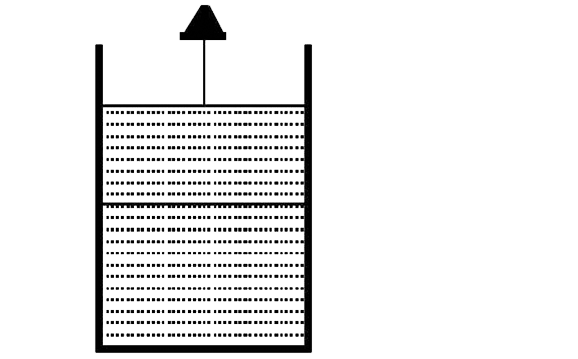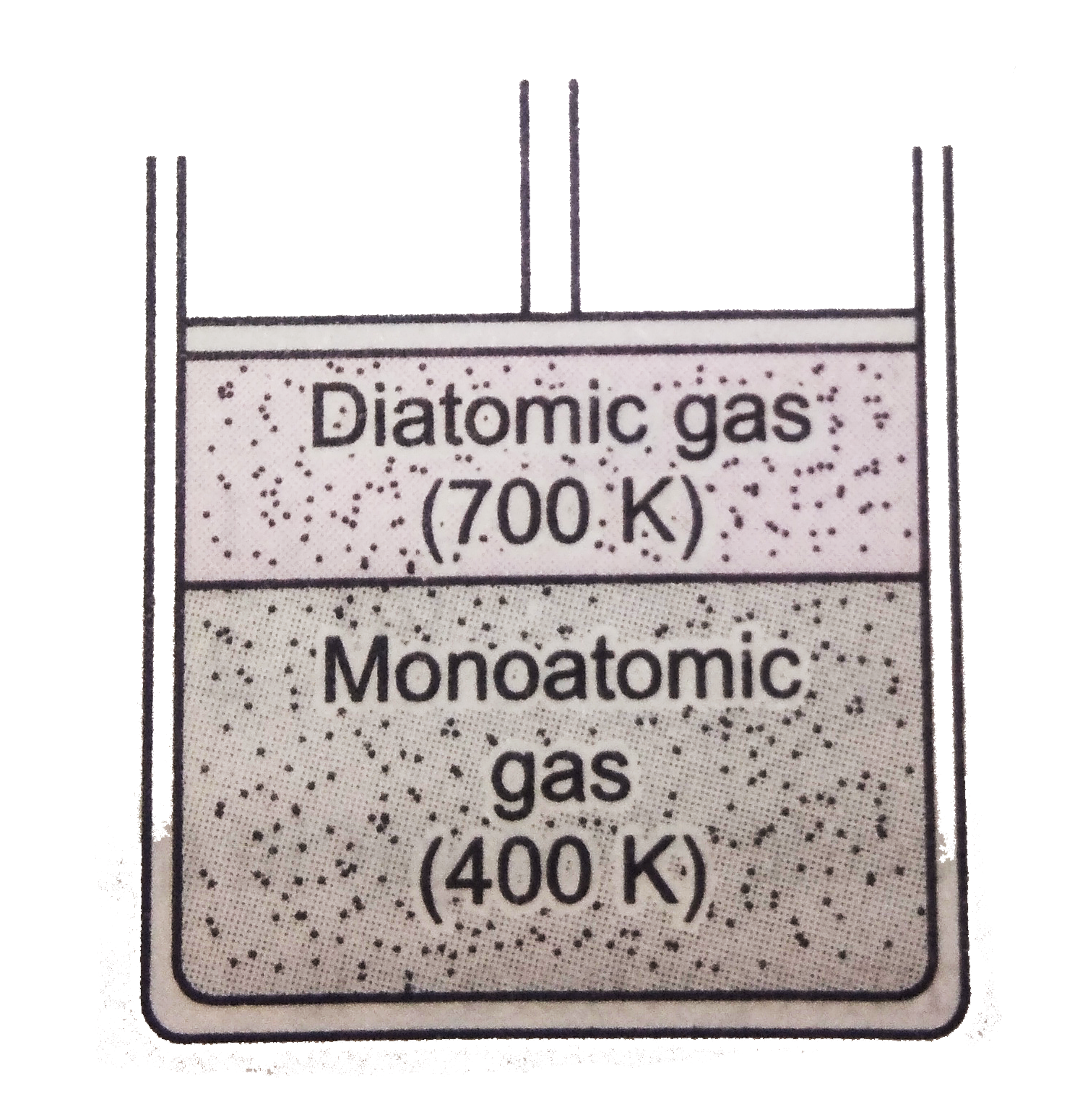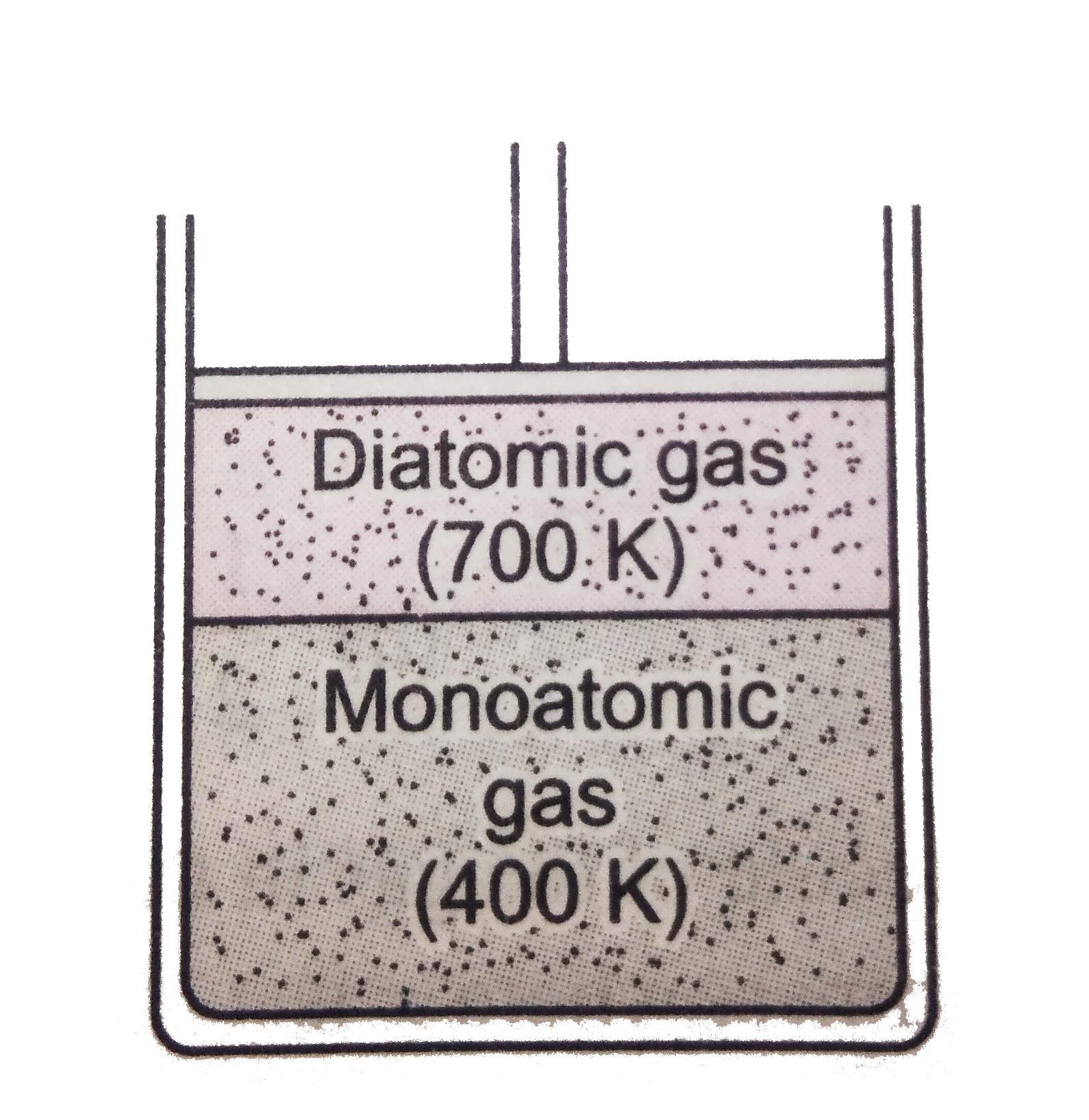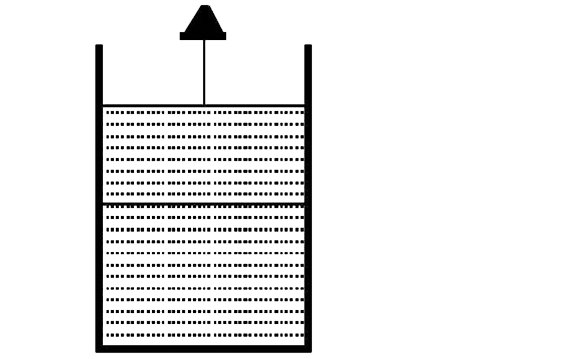An ideal gas is taken in a container which is divided into 2 parts by a partition. Entropy of the parts is S1&S2 . What will be entropy if partition is removed?
S1+S2
S1−S2
S1×S2
S1S2
To solve the problem, we need to understand the concept of entropy and how it behaves when a partition in a container is removed. Here’s a step-by-step solution:
Step 1: Understand the System
We have a container divided into two parts by a partition. Each part has an entropy value: S1 for the first part and S2 for the second part.
Hint: Remember that entropy is a measure of disorder or randomness in a system.
Step 2: Identify the Nature of Entropy
Entropy is an extensive property, meaning it depends on the amount of substance present in the system. Extensive properties can be added together.
Hint: Think about how extensive properties behave when you combine systems.
Step 3: Remove the Partition
When the partition is removed, the two parts of the gas will mix and occupy the entire volume of the container. This mixing leads to an increase in the overall disorder of the system.
Hint: Consider what happens to the arrangement of gas molecules when they are allowed to spread out freely.
Step 4: Calculate Total Entropy
Since entropy is extensive, the total entropy of the system after the partition is removed can be calculated by simply adding the entropy values of the two parts:
Stotal=S1+S2
Hint: Use the formula for adding extensive properties to find the total entropy.
Conclusion
The total entropy of the system after the partition is removed will be S1+S2.
Final Answer: The total entropy after removing the partition is S1+S2.
We have a container divided into two parts by a partition. Each part has an entropy value: S1 for the first part and S2 for the second part.
Entropy is an extensive property, meaning it depends on the amount of substance present in the system. Extensive properties can be added together.
When the partition is removed, the two parts of the gas will mix and occupy the entire volume of the container. This mixing leads to an increase in the overall disorder of the system.
Since entropy is extensive, the total entropy of the system after the partition is removed can be calculated by simply adding the entropy values of the two parts:
The total entropy of the system after the partition is removed will be S1+S2.
Similar Questions
An ideal gas in a cylinder is separated by a piston in such a way the entropy of one part is S1 and that of the other part is S2. Given that S1>S2. If the piston is removed then the total entropy of the system will be:
View SolutionIn the figure, a container is shown to have a movable (without friction) piston on top. The container and the piston are all made of perfectly insulated material allowing no heat transfer between outside and inside the container. The container is divided into two compartments by a rigid partition made of a thermally conducting material that allows slow transfer of heat. The lower compartment of the container is filled with 2 moles of an ideal monatomic gas at 700K and the upper compartment is filled with 2 moles of an ideal diatmoic gas at 400K. The heat capacities per mole of an ideal monatomic gas are CV=32R,CP=52R, and those for an ideal diatomic gas are CV=52R,CP=72R,

Now consider the partition to be free to move without friction so that the pressure of gasses in both compartments is the same. The total work done by the gases till the time they achives equilibrium will beView Solution
Knowledge Check
- Question 1 - Select One
A container with rigid walls is covered with perfectly insulating material. The container is divided into two parts by a partition. One part contains a gas while the other is fully evacuated (vacuum). The partition is suddenly removed. The gas rushes to fill the entire volume and comes to equilibrium after a little time. If the gas is not ideal,
Athe initial internal energy of the gas equals its final internal energyBthe initial temperature of the gas equals its final temperatureCthe initial pressure of the gas equals its final pressureDthe initial entropy of the gas equals its final entropy - Question 2 - Select One
In Fig., a container is shown to have a movable (without friction) piston on top. The container and the piston are all made of perfectly insulating material allowing no heat transfer between outside and inside the container. The container is divided into two compartments by a rigid partition made of a thermally conducting material that allows slow transfer of heat. the lower compartment of the container is filled with 2 moles of an ideal monoatomic gas at 700 K and the upper compartment is filled with 2 moles of an ideal diatomic gas at 400 K. the heat capacities per mole of an ideal monoatomic gas are Cυ=32RandCP=52R, and those for an ideal diatomic gas are Cυe=52RandCP=72R.
Consider the partition to be rigidly fixed so that it does not move. when equilibrium is achieved, the final temperature of the gases will be
 A550 KB525 KC512.5 KD490 K
A550 KB525 KC512.5 KD490 K - Question 3 - Select One
In Fig., a container is shown to have a movable (without friction) piston on top. The container and the piston are all made of perfectly insulating material allowing no heat transfer between outside and inside the container. The container is divided into two compartments by a rigid partition made of a thermally conducting material that allows slow transfer of heat. the lower compartment of the container is filled with 2 moles of an ideal monoatomic gas at 700 K and the upper compartment is filled with 2 moles of an ideal diatomic gas at 400 K. the heat capacities per mole of an ideal monoatomic gas are Cυ=32RandCP=52R, and those for an ideal diatomic gas are Cυe=52RandCP=72R.
Now consider the partition to be free to move without friction so that the pressure of gases in both compartments is the same. the total work done by the gases till the time they achieve equilibrium will be
 A250 RB200 RC100 RD−100R
A250 RB200 RC100 RD−100R
In the figure, a container is shown to have a movable (without friction) piston on top. The container and the piston are all made of perfectly insulated material allowing no heat transfer between outside and inside the container. The container is divided into two compartments by a rigid partition made of a thermally conducting material that allows slow transfer of heat. The lower compartment of the container is filled with 2 moles of an ideal monatomic gas at 700K and the upper compartment is filled with 2 moles of an ideal diatmoic gas at 400K. The heat capacities per mole of an ideal monatomic gas are CV=32R,CP=52R, and those for an ideal diatomic gas are CV=52R,CP=72R,

Consider the partition to be rigidly fixed so that it does not move. When equilibrium is achieved, the final temperature of the gasses will beView SolutionA container of volume 1m3 is divided into two equal compartments by a partition. One of these compartments contains an ideal gas at 300 K . The other compartment is vacuum. The whole system is thermally isolated from its surroundings. The partition is removed and the gas expands to occupy the whole volume of the container. Its temperature now would be
View SolutionA sound wave passing volume 1m3 is divided into two equal compartments by a partition. One of these compartments contains an ideal gas at 300K. The other compartment is vacuum. The whole system is thermally isolated from its surroundings. The partition is removed and the gas expands to occupy the whole volume of the container. Its temperature now would be
View SolutionA thermally insulated container is divided into two parts by a screen. In one part the pressure and temperature are P and T for an ideal gas filled. In the second part it is vacuum. If now a small hole is created in the screen, then the temperature of the gas will
View SolutionA thermally insulated container is divided into two parts by a screen. In one part the pressure and temperature are P and T for an ideal gas filled. In the second part it is vacuum. If now a small hole is created in the screen, then the temperature of the gas will
View Solution

